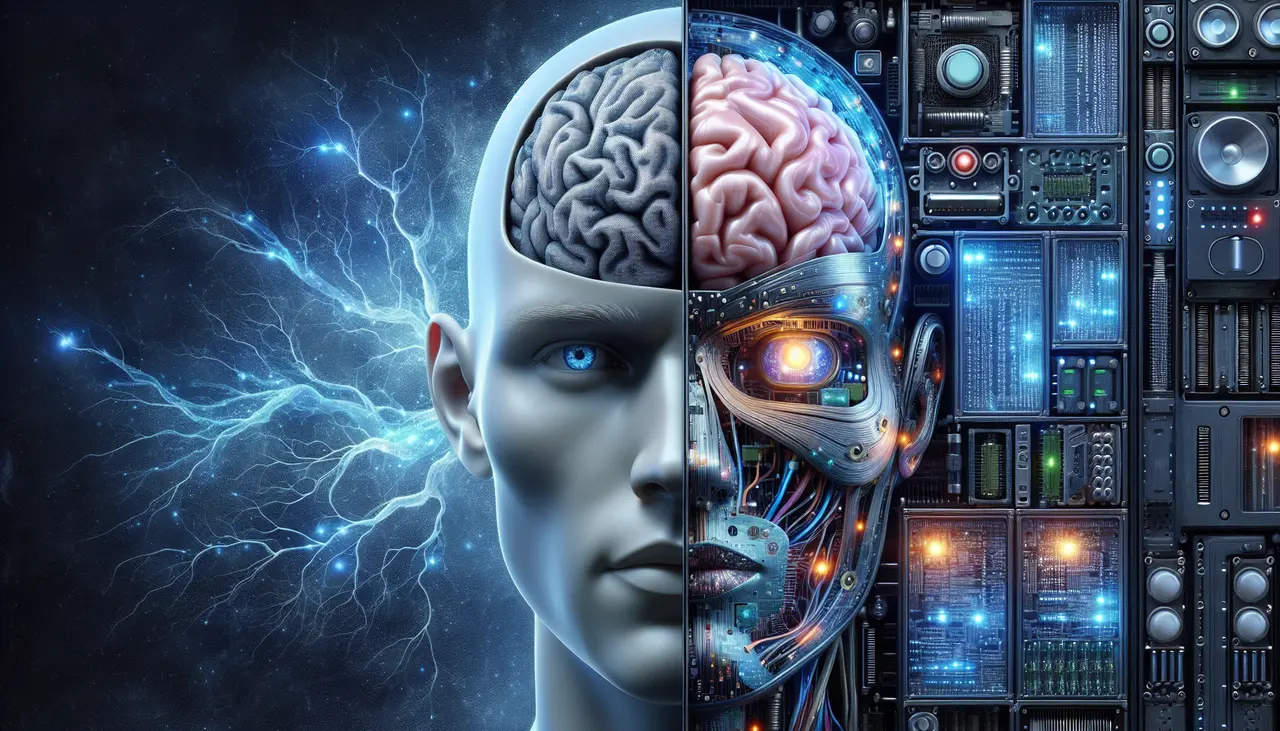As technology advances at a rapid pace, the debate about whether artificial intelligence (AI) will ever reach the level of human intelligence becomes more relevant. In this article, we’ll delve into the possibilities, comparing the strengths and limitations of AI and human cognition, and exploring what the future might hold.
Understanding the Basics: AI vs. Human Intelligence
To comprehend the possibility of AI reaching human intelligence, we must first understand the fundamental differences between AI and human cognition. AI is primarily based on algorithms and data processing, whereas human intelligence encompasses emotions, consciousness, and creative thinking. With its capacity for vast data analysis and pattern recognition, AI can mimic certain cognitive functions but lacks the emotional depth and adaptability found in human thought. Humans, on the other hand, combine sensory perceptions with experiences to form complex, contextual understandings. This is especially apparent in scenarios requiring empathy, social interaction, and ethical decision-making.
The essence of human intelligence involves an intricate blend of emotional and cognitive skills, which AI, although powerful in computation, cannot replicate entirely. Humans excel in handling unpredictable situations, thanks to our ability to learn from minimal examples, often achieving what is known as ‘one-shot learning’ In contrast, AI requires extensive datasets for training and lacks the intuitive leap humans can make when integrating new knowledge with past experiences.
Current Achievements in AI Technology
AI technologies have accomplished incredible tasks, such as beating world champions in strategic games and automating complex data analysis. These advancements in machine learning and computational power showcase AI’s growing capabilities. For instance, machine learning algorithms excel at pattern recognition, significantly surpassing human abilities in data-driven fields like digital fraud detection and medical imagery interpretation. The speed at which AI can process information is unrivaled, making it an indispensable tool in areas requiring rapid analysis and decision-making.
Beyond computational tasks, AI is also stepping into creative arenas, generating art, music, and even writing through sophisticated algorithms. However, it’s crucial to note that AI’s creativity is fundamentally different from human creativity. AI imitates through synthesis of existing data rather than genuine creativity or inspiration. It can produce art-like creations or human-like text, but these are more accurately described as ‘synthetic recitations’ of what it has been programmed to understand.
The Limitations of AI
Despite AI’s successes, it still struggles with areas like emotional intelligence and contextual understanding—domains where human intelligence excels. AI operates strictly within the boundaries of its programming, lacking the innate ability to learn from experience the way humans do. This limitation is evident in AI’s inability to handle ambiguous or novel situations that require a nuanced understanding or empathetic response. Human intelligence, developed through millions of years of evolutionary pressures as social beings, naturally incorporates social skills and ethical judgments that current AI systems cannot mimic.
Moreover, AI’s reliance on large datasets and predefined algorithms means it can inadvertently perpetuate biases present in its training data. This challenge calls for a careful and responsible approach to AI development, ensuring that systems are not only efficient but also fair and unbiased. Human oversight is essential in guiding AI’s application, allowing for more ethical and socially responsible outcomes .
Ethical Considerations and the Human Perspective
As AI continues to develop, ethical issues arise, including privacy concerns, job displacement, and dependence on technology. It’s crucial to address these aspects while progressing towards more advanced AI systems. The balance between technological advancement and ethical responsibility becomes more pronounced as AI systems become integrated into sensitive areas such as healthcare, autonomous vehicles, or even decision-making processes that affect individual lives.
Future Prospects: Can AI Bridge the Gap?
Looking ahead, researchers and scientists are continually working to enhance AI’s capabilities. Innovations in neural networks and quantum computing hold the promise of narrowing the gap between AI and human intelligence. These advancements could facilitate more intuitive and adaptive learning models that simulate aspects of human cognition more closely.
The future of AI and human intelligence interaction lies in collaboration rather than competition. As AI evolves, its role could be to augment human capabilities, assisting us in areas where computation is vital while humans focus on creativity, empathy, and ethical decision-making. This synergy could lead to more efficient problem-solving and innovation, unlocking new potential in various fields. Emphasizing collaborative developments will ensure that AI becomes a tool for enhancing human life rather than replacing it .
A Balanced Future for AI and Human Intelligence
While AI has made remarkable strides and continues to evolve, achieving the full spectrum of human intelligence remains an open-ended challenge. The journey towards more advanced AI is ongoing, opening doors to new possibilities and potential benefits. However, it is essential to remain conscientious of the ethical considerations and maintain a balanced perspective on the coexistence of AI and human intelligence.












